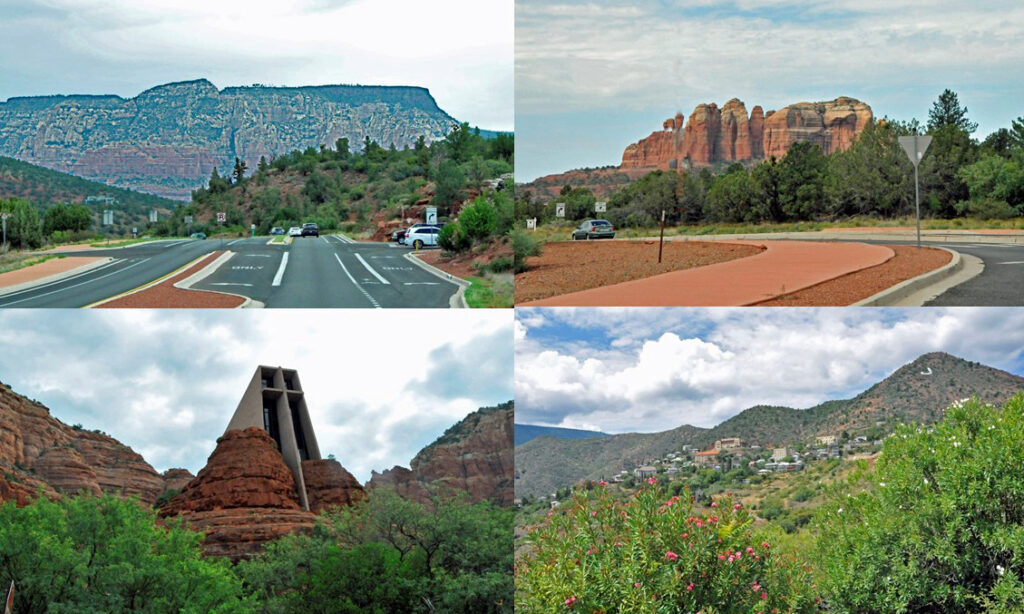Today, in my continuing series on places to go during Indiana winters, we visit Sedona, Arizona, with an average high March temperature of 65 degrees.
About 300 million years ago, geologic forces created unique red sandstone outcroppings in a 4000-foot high area 30 miles south of Flagstaff, Arizona. In 1902, the United States established a post office in the area and named it “Sedona” after the postmaster’s wife. For years, Sedona remained a sleepy desert town, used as a scenic backdrop for western movies. Because of its pleasant temperatures and dramatic settings, vacationers began coming to Sedona in the 1950s. In 1956, Marguerite Staude, a sculptor who owned a ranch near Sedona, designed and supervised the building of the Roman Catholic Chapel of the Holy Cross, dramatically set into the sandstone south of the center of town. In 1980, a Sedona medium claimed that the area around Sedona includes so-called “vortexes” (not “vortices”), claimed to be spots where the earth’s magnetic forces are particularly strong, providing spiritual and physical healing.
Sedona, now with a population of about 10,000, attracts visitors from around the world. Many new age shops cater to those coming to town to experience its spiritual energy. Multiple tours take visitors to the claimed vortexes, ranging from four to seven depending on the tour. Even people taking the tours who reject the vortex claims find relaxation among the red-orange cliffs and buttes, the colors of which change with the time of day. Sedona is a picturesque day trip from Phoenix and about 100 miles south of the Grand Canyon. Visitors to Sedona should plan on stopping at nearby Jerome, a former copper mining town that was once the fourth largest city in Arizona. The Douglas family mansion is now a museum, chronicling the time when Jerome was the “wickedest town in the west.”
